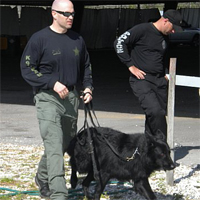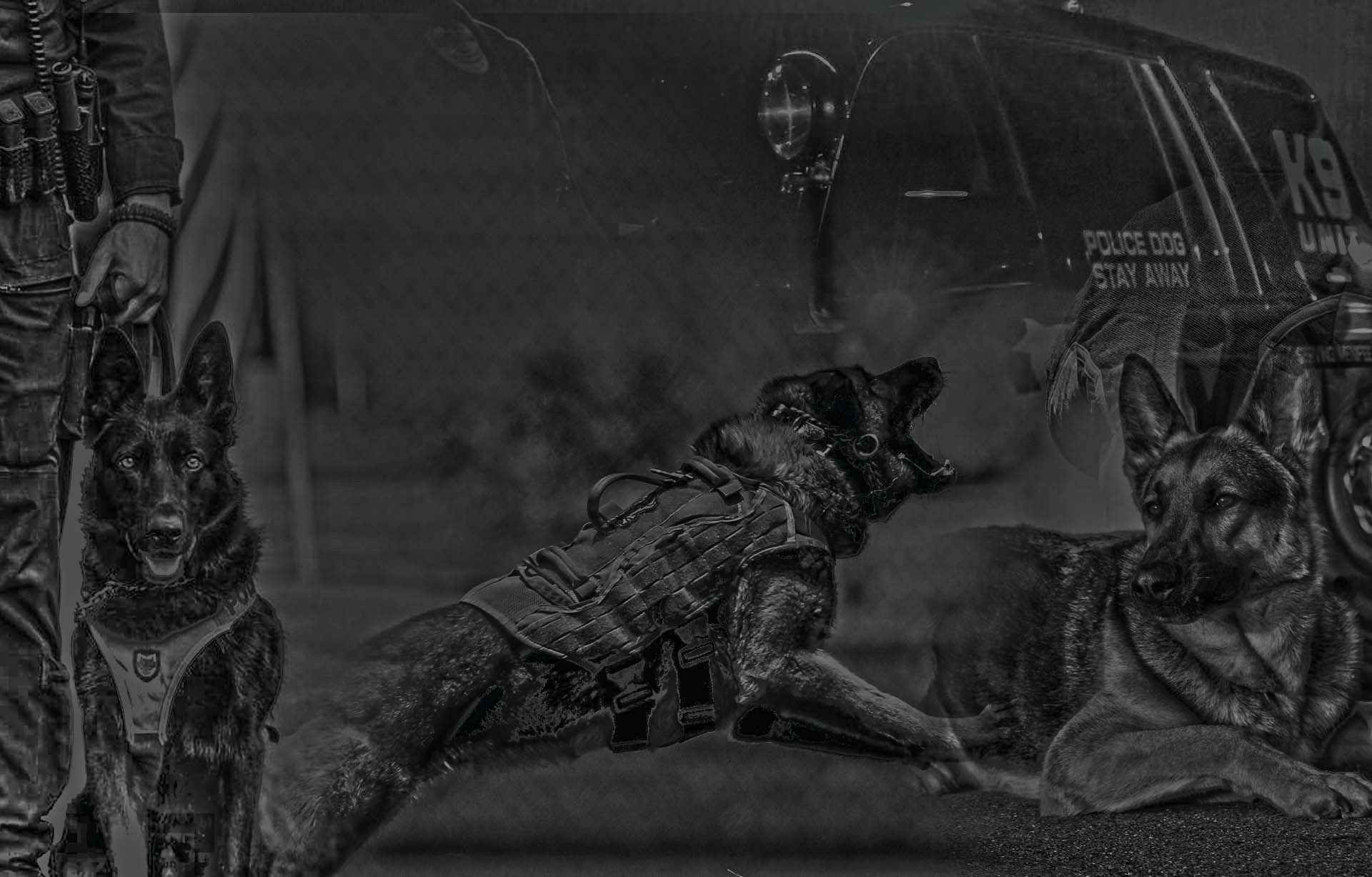
Florida Law Enforcement Canine Association Patrol Certification
The Florida Law Enforcement Canine Association Patrol Certification consists of five phases.
Certification Requirements:
The K-9 team must pass all phases except either the area search or the building search to receive the Patrol Certificate.
The five phases are:
- Obedience
- Criminal Apprehension
- Call Off
- Building Search
- Area Search
- The K-9 team must pass the obedience phase first to continue certification.
- Certification may be terminated at any time if the Certifying Officials determine the dog is not under control.
- The dog must wear only on-duty equipment.
- If electric collars are worn, the handler must give the transmitter to the officials, and the receiver must be turned off.
- Two (2) Certifying Officials must be present for certification.
- If the K-9 team fails any portion of the test, they may re-test the failed portion within 5 days. The team must wait 48 hours before re-testing.
- If the team does not certify within 5 days, they must perform the entire test again.
- The agency requesting certification must provide a decoy, equipment, and certification locations.
Phase 1: Obedience
Objectives:
- The K-9 team must heel in different directions while remaining under control at the handler’s side.
- The test consists of off-lead exercises.
Testing Criteria:
The dog will heel on a course with:
- Two left turns
- Two right turns
- One about-face
- Three straight legs with a turn at the end of each (minimum 20 yards per leg).
- A .38 caliber blank gun will be fired at some point during the heeling phase by an unseen helper (100-150 feet away).
- At the midpoint of the final leg, the dog must perform a sit, stand, or down in motion while the handler continues walking.
- The handler will command the dog to two different positions using verbal or hand commands.
- The test ends when the handler calls the dog to a heel position.
Pass/Fail Criteria:
- The dog must stay under control at the handler’s side.
- The dog must correctly respond to three out of four commands (one in motion, two different distance positions, and recall to heel).
- Minimal forging or lagging is allowed and will not be considered a failure.
Phase 2: Criminal Apprehension
Purpose:
- To test the dog’s ability to apprehend a suspect by biting and holding until released by command.
Release Criteria:
The dog must:
- Respond to the handler’s release command (limit of four commands).
- Release the bite.
- Remain alert and ready to respond to movement.
Procedure:
- The dog is deployed off-lead.
- The decoy (wearing protective gear) appears 30 yards away.
- The handler issues two verbal announcements. After the first, the decoy begins jogging away. After the second, the handler deploys the dog.
- The dog pursues and bites the decoy.
- The decoy stops moving and complies when ordered.
- The handler commands the dog to release.
- Upon release, the handler chooses to leave the dog in a guard position or recall to heel.
Pass/Fail Criteria:
- The dog must stay on the bite until commanded to release.
- The dog must release the bite with no more than four commands while the handler is at least 10 feet away.
- The dog must not re-engage before the handler takes control.
Phase 3: Call Off
Purpose:
- To assess the dog’s ability to disengage, recall, or detain a suspect on command.
Procedure:
- The exercise takes place in a 100-yard by 40-yard area with multiple hiding spots.
- The decoy emerges 40 yards away and begins jogging.
- The dog pursues on command.
- When the decoy surrenders, the handler commands the dog to:
- Disengage – The dog stops pursuit and stays in place until the handler takes control.
- Recall – The dog returns to the handler.
- Detain – The dog approaches and holds position (sit/down/stand) while barking without making contact.
Pass/Fail Criteria:
- The dog must pursue the decoy.
- The dog must not make aggressive contact with the decoy when called off or detaining.
- The dog must travel a minimum of 10 yards before being recalled.
Phase 4: Building Search
Purpose:
- To simulate a suspect hiding inside a building to avoid apprehension.
Testing Criteria:
The building size must be 1,000-1,500 square feet (e.g., residence, warehouse, office).
The decoy will:
- Hide for at least 10 minutes before testing begins.
- Be in a safe hiding spot with no protective equipment.
- Enter the building via a route different from the K-9 entry point.
Procedure:
- The handler follows department policy for announcements before deployment.
- The dog searches off-lead with on-duty equipment.
- The dog’s indication of the decoy must be obvious.
- The test ends when the handler calls the decoy’s location and takes control of the dog.
Pass/Fail Criteria:
- The certifying official selects a building type based on availability.
- The search must be challenging yet fair.
Phase 5: Area Search
Purpose:
- To simulate a suspect fleeing into an open area with multiple hiding spots.
Testing Criteria:
The search area must be 150 ft. × 150 ft..
The decoy will:
- Hide at least 10 minutes before testing.
- Be completely concealed with no bite equipment.
Procedure:
- The dog may search on or off lead using on-duty equipment.
- The handler follows department policy for announcements before deployment.
- The dog’s indication of the decoy must be obvious.
- The test ends when the handler calls the decoy’s location and takes control of the dog.
Pass/Fail Criteria:
- The certifying official selects an appropriate search area based on availability.
- The test must be fair yet challenging.
Final Notes:
- Certification is Pass/Fail for all phases.
- If a K-9 team fails any part, they may re-test within five (5) days.
- If certification is not completed within five (5) days, the full test must be repeated.

